This is a recipe for how to make Ghee and Clarified Butter – they are almost the same thing (more on this later). Extremely easy, cheaper than buying, shelf-stable, and has a high smoke point which makes it excellent for pan frying or roasting things at high heat without burning like normal butter.
It’s the fat used in many traditional Indian curries for intense buttery richness, to make pan fried things like Potato Rosti super crispy, and a restaurant secret for extra lush Hollandaise Sauce (in 90 seconds!).
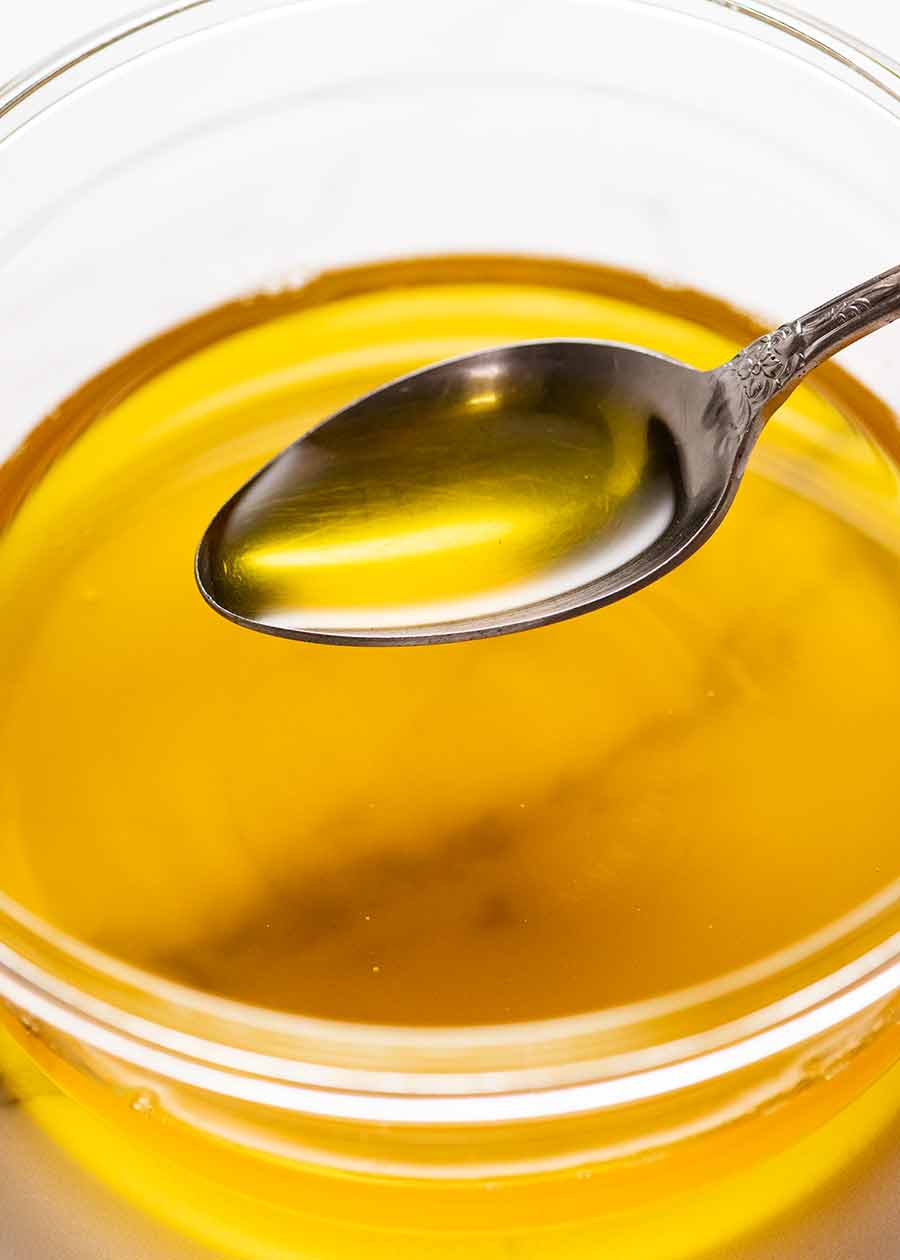
What is clarified butter and ghee?
And why do I love it so much? Here’s why!
-
Clarified Butter is normal butter minus the dairy component and water ie just butter fat;
-
Ghee is a type of Clarified Butter, best known as used in Indian cooking. Arguably the purest form because the method to make it ensures 100% of the dairy is removed, whereas some basic methods for clarified butter are not as thorough;
-
They have a more intense butter flavour and in the case of Ghee, a slightly nutty flavour imparted by the browned milk solids;
-
Is a gorgeous golden yellow colour;
-
Is completely clear and pure, not clouded with milky bits and foam like normal melted butter;
-
Makes things much more crisp than butter – such as the Potato Rosti pictured below; and
-
Has a high smoke point of 230°C/450°F, compared to butter which has a smoke point of only 175°C/350°F. This is in fact higher than some vegetable oils, meaning you can use clarified butter/ghee just as you would a normal cooking fat, frying and sauteeing things at a high temperature without setting off the smoke alarm.
I’ve used clarified butter and ghee in a handful of recipes and in each of those I keep repeating the same directions for how to make it at home if you can’t find it, plus it’s about half the price to make at home.
So I thought it was about time I put up a separate recipe for it – because it’s so easy!
How to make Ghee / How to make Clarified Butter
If you can melt butter on the stove, you can make ghee! Essentially, you just leave butter on a medium low stove for 10 minutes until you see golden bits on the base of the pan which are the milk solids – and this means it’s done. The water has evaporated and the dairy has solidified which will be strained out.
Here’s how it changes during the simmering time:
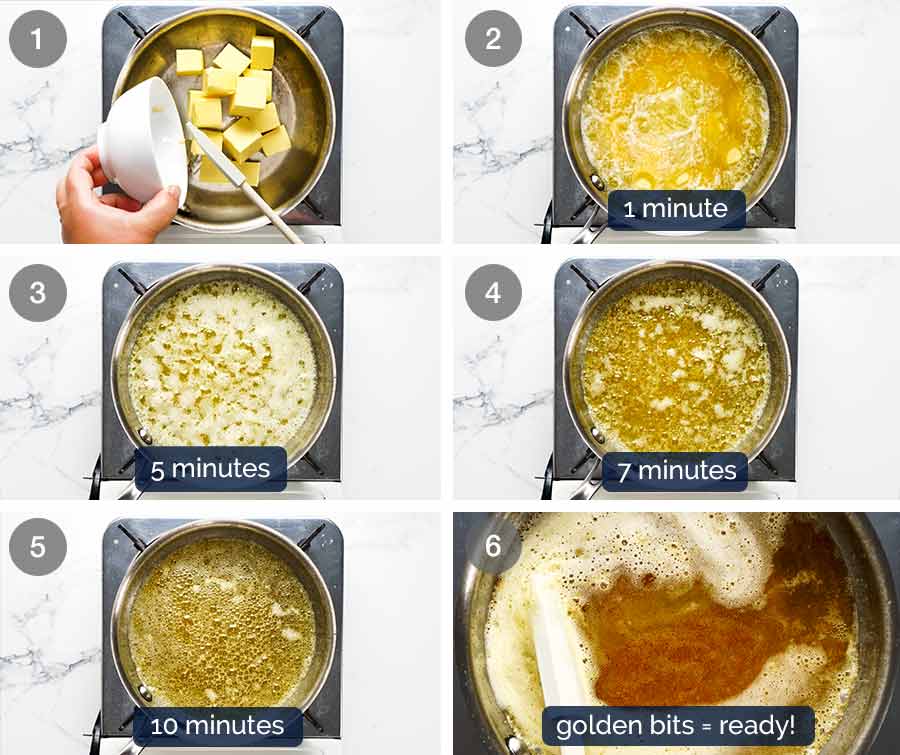
Then simply line a mesh colander with a paper towel and strain. Then marvel at the incredible liquid gold – and the smell! It’s insane – so buttery and nutty!

How to store ghee / clarified butter
Ghee and clarified butter can be kept in the pantry because the dairy has been removed and the butter is now 100% fat, so it won’t spoil. It will keep for 3 months in the pantry – or even a year in the fridge!
Important note: other basic methods of making clarified butter – such as just skimming the foam off – are not as thorough in removing all the dairy. So you should not store that in the pantry, it must be kept in the fridge. And I personally would not keep it any longer than the shelf life of the butter you used.
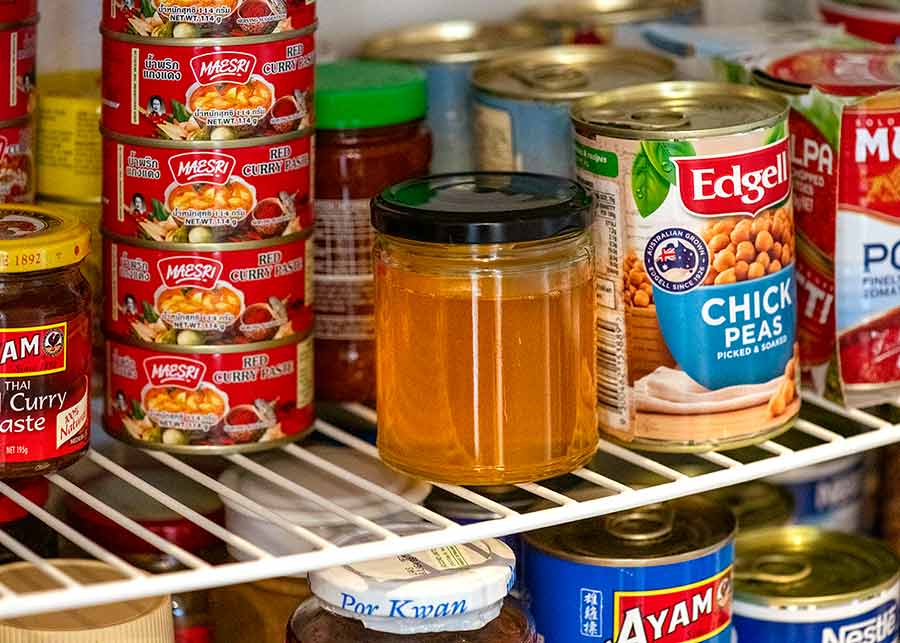
Ghee is liquid when it’s warm. In the pantry, it will firm up but still be quite soft – sort of like peanut butter consistency – as depicted below. If you refrigerate it, it becomes very firm, like butter, but it looks sort of grainy (melts completely smooth).
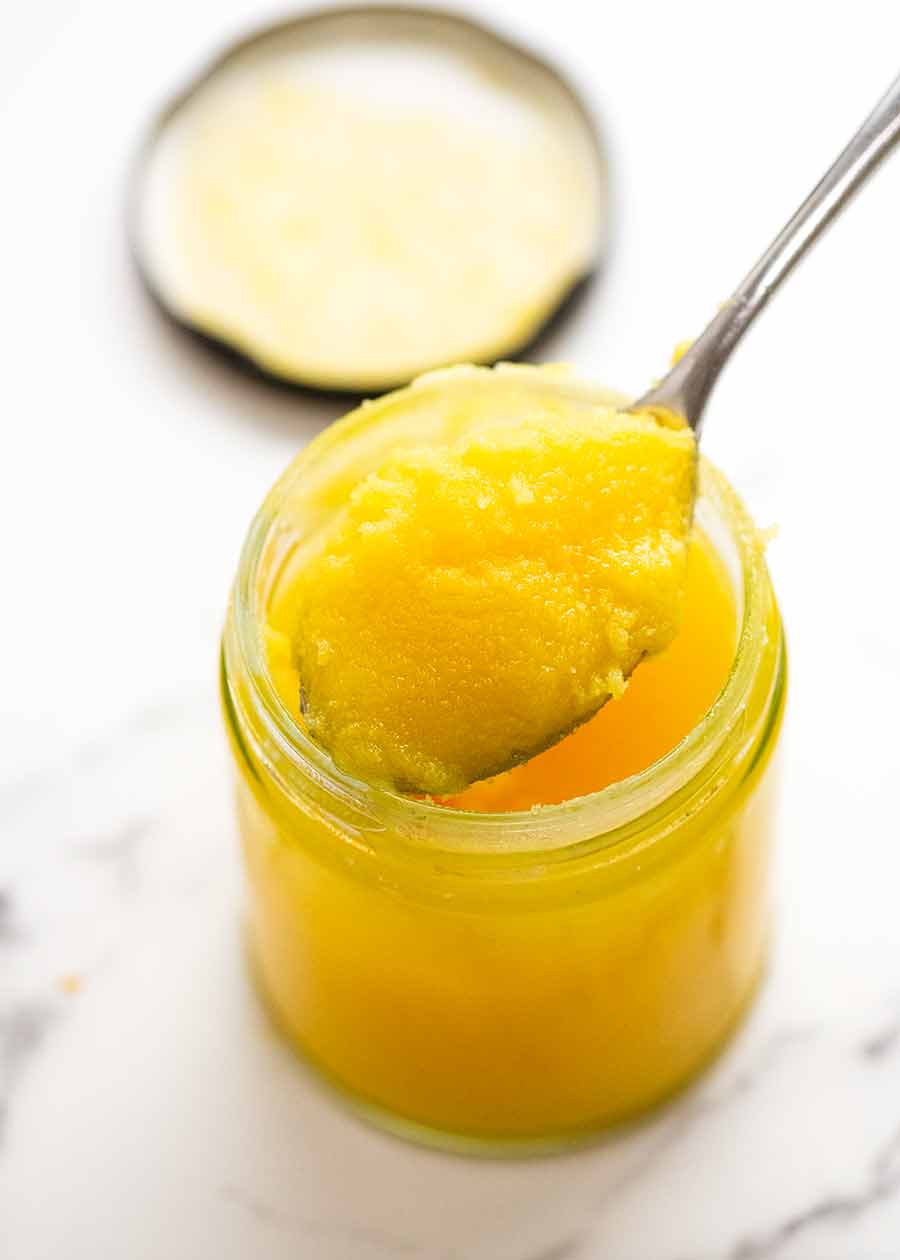
What butter to use
I use unsalted butter. Ghee and clarified butter purchased at the store is unsalted.
You can use salted if you prefer, but unsalted is handier because it’s the standard in recipes so you don’t have to worry about oversalting things because you have salted ghee.
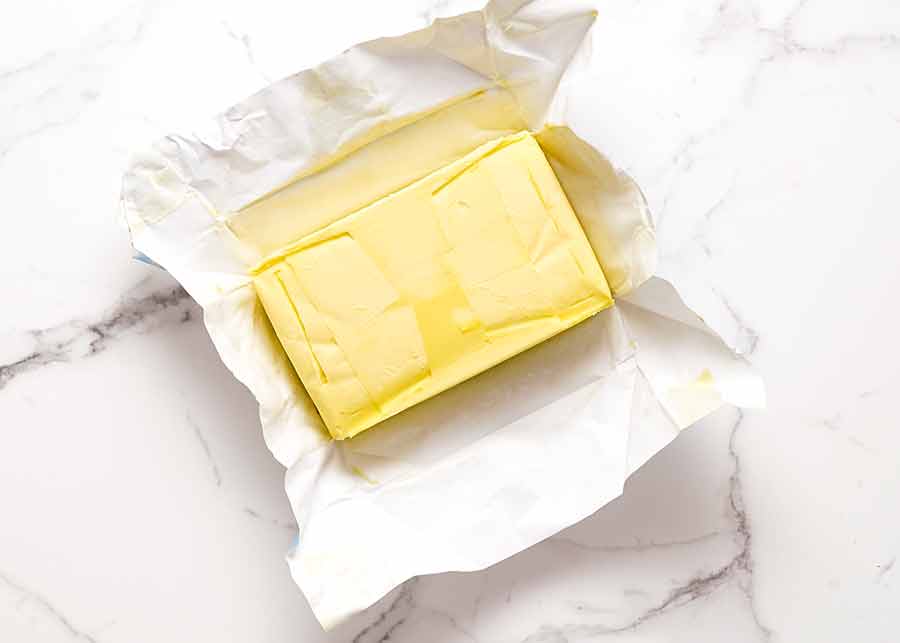
What is clarified butter? What is ghee? And what’s the difference?
Clarified butter and ghee are the almost same thing. Both are simply normal butter with the water and milk solids removed, leaving behind pure butter fat. Pure butter fat has a more intense butter flavour and a higher smoke point, meaning it is suitable for using just like regular cooking oil.
Put another way, butter is made up of about 82% fat, and the rest is dairy (milk solids) and water. The dairy is what leaves black spots on your food when you sear over high heat – because it burns. The water is what stops things going ultra crispy when you pan fry in butter, and it dilutes the butter flavour.
So with clarified butter, the water is removed and the dairy component is strained out, leaving you with pure butter fat.
The difference between ghee and clarified butter
Clarified butter is the general term for butter that has had water and milk solids removed, as explained above. However there are different methods for achieving this. One of the quickest and most common methods is to melt the butter, skim off the foam (which are the milk solids that initially float to the surface) and pour off the butter fat for use, leaving behind any remaining water.
Ghee however takes a specific approach to clarifying butter. Instead of skimming, you continue to heat the butter until all the water boils off, the milk solids go brown and sink to the bottom, and finally are strained out. As you can see this is the exact method I’ve provided above. So what you get with mine is true ghee! Think of it as a specific kind of clarified butter. I find it’s not only simpler, but has a superior flavour too AND you can be confident that every bit of dairy has been removed so it is safe to keep for months – years, if stored in the fridge!!!

What to do with ghee / clarified butter
Both ghee and clarified butter are used in cooking, as opposed to spread on toast or bread. You can use it in place of butter in recipes because it has a higher smoke point than oil – it will make things crisper and you won’t get those burnt black spots you get from pan frying in butter.
Here are a few examples:
-
As the fat for almost every Indian dish, especially curries – traditional use of ghee;
-
To make the crispiest, best tasting Potato Rosti you’ve ever had;
-
In place of oil or butter in any recipe for pan frying, roasting, sauces. Try Garlic Prawns with butter instead of oil, use it to pan-fry fish, for crispy roasted potatoes, buttery roast carrots, or this butter smeared Herb and Garlic Roast Chicken, Standing Rib Roast or Turkey Breast (use the ghee softened, not melted);
-
In Hollandaise Sauce for Eggs Benedict – for a richer flavour and smoother sauce;
-
Elegant, classic French Sauce for pan fried fish – see Lemon Butter Sauce for Fish;
-
Drizzle steamed, braised or roasted vegetables to make it even tastier;
-
Toss through this Movie Popcorn or Lightly Sweet ‘n Salty Popcorn – it stays CRISP for days, unlike when using normal butter!
-
Drizzle over soup;
-
To make rice dishes, such as Mushroom Risotto or Buttery Seasoned Rice;
-
To make the most amazing steak ever.
Note: Use with caution in baking recipes (such as cakes and cookies). Baking is a science – so you don’t want to muck around with batters.
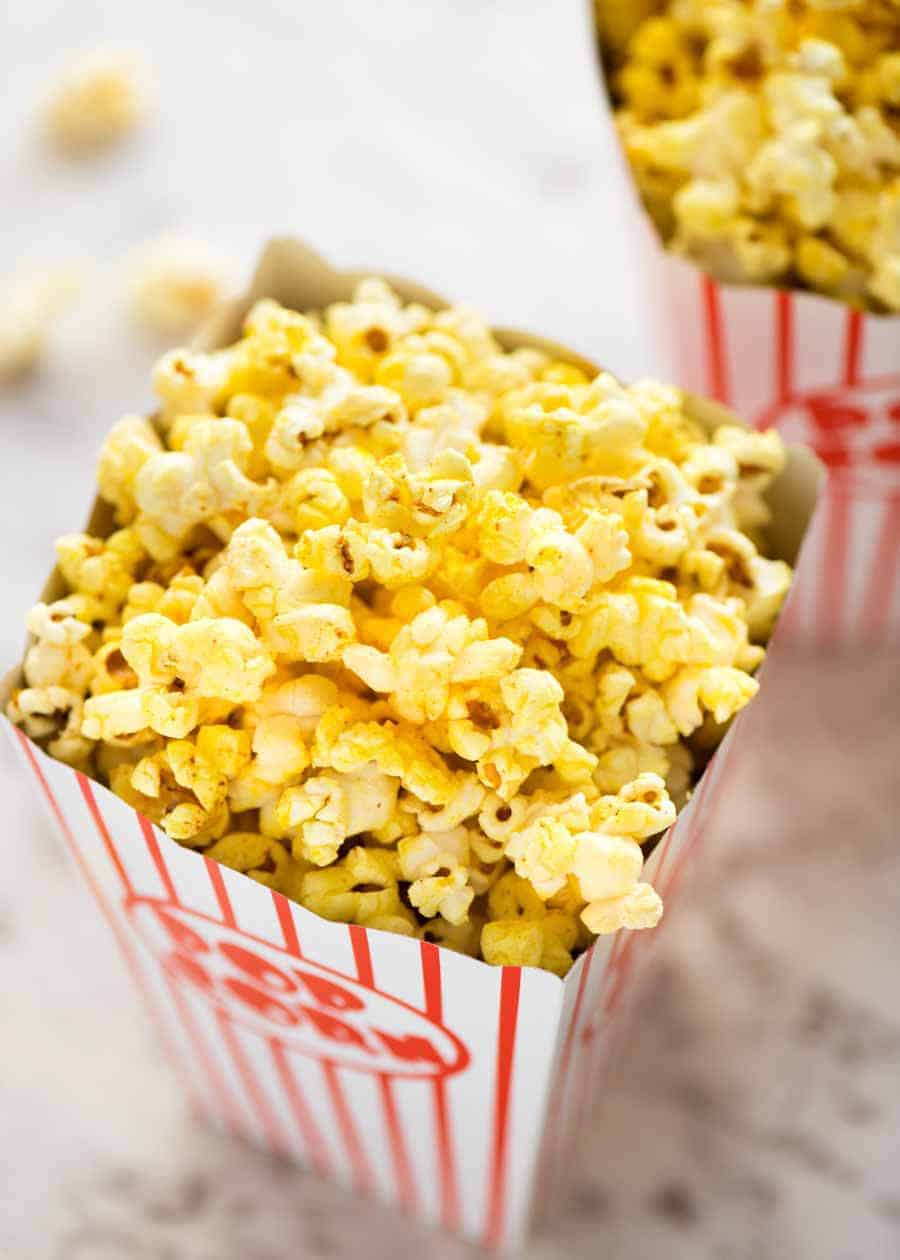
Lastly, it’s worth knowing that ghee is a secret ingredient used by Chefs in fine dining restaurants to add an extra touch of buttery flavour into dishes. Whether it’s brushing filo pastry for baklava or stirring through Creamy Mashed Potato or to make the most amazing Mashed Cauliflower of your life, it’s just one of the little tricks used by professionals to make food extra special.
And now YOU can do it too! – Nagi x
Watch how to make it
Hungry for more? Subscribe to my newsletter and follow along on Facebook, Pinterest and Instagram for all of the latest updates.
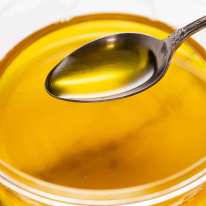
How to make Ghee and Clarified Butter (same thing - almost)
Ingredients
- 250g / 2 sticks unsalted butter , cut into 2.5cm / 1" cubes (or so)
Instructions
- Use a small or medium saucepan or small skillet with a silver base so it's easier to see when milk solids are golden.
- Put butter in then let it melt over medium-low heat.
- Leave to simmer for 10 minutes - it will start to foam at about 5 minutes, then at 7 minutes most of the foam will be gone, and by the end the foam should be almost all gone.
- The ghee is ready when the milk solids that settle on the base of the pan turn golden.
- Strain through a mesh colander lined with a single sheet of paper towel.
- Then pour into a jar for storage. Keep in the pantry 3 months (firms to peanut butter consistency), or fridge 1 year (hardens like butter).
Using:
- Use in place of butter or fat for pan frying, roasting, sauces. The smoke point of ghee / clarified butter is 230°C / 450°F which is considerably higher than common oils such as vegetable oil and olive oil, so it won't smoke and burn.
- Use with caution in baking recipes - such as cakes and cookies.
Recipe Notes:
Life of Dozer
Never far from the food station, whether cooking at home or out camping in the bush!
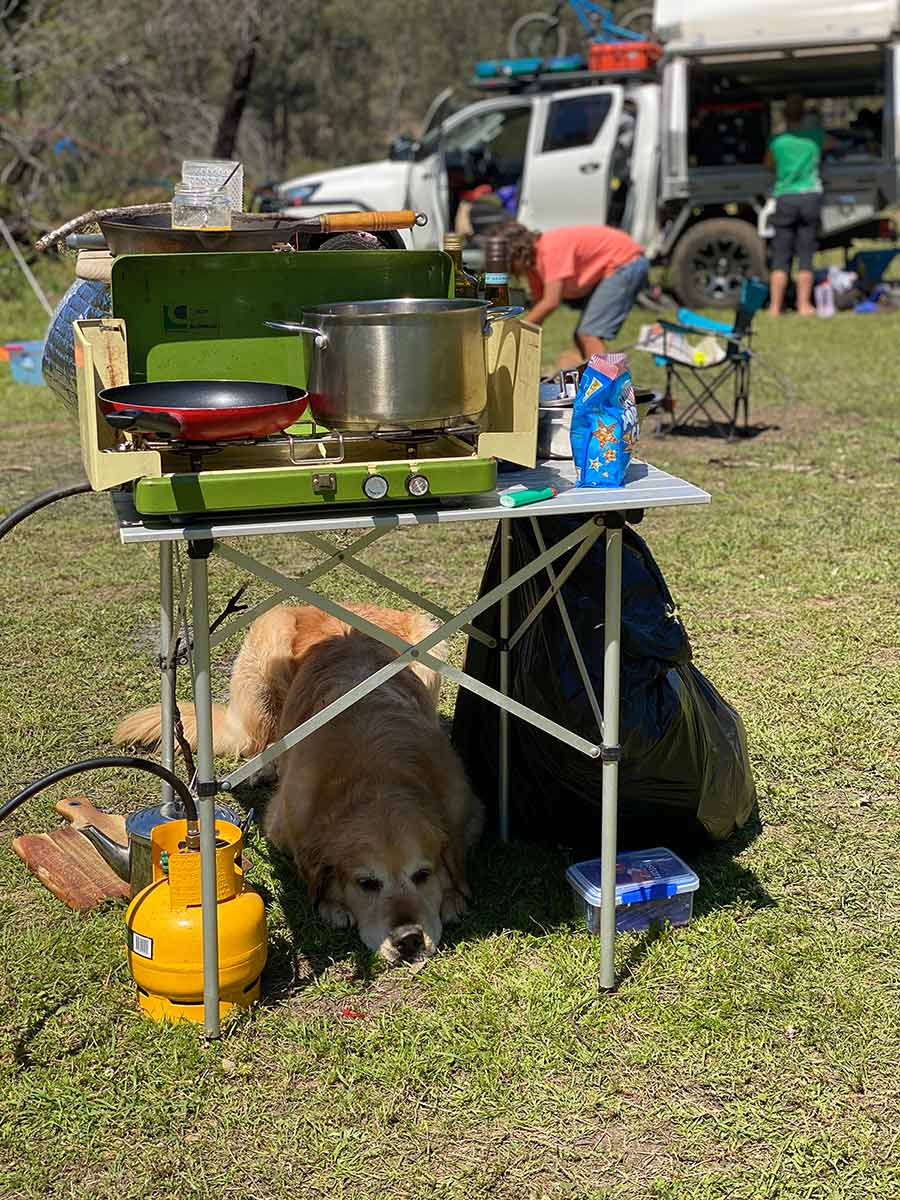

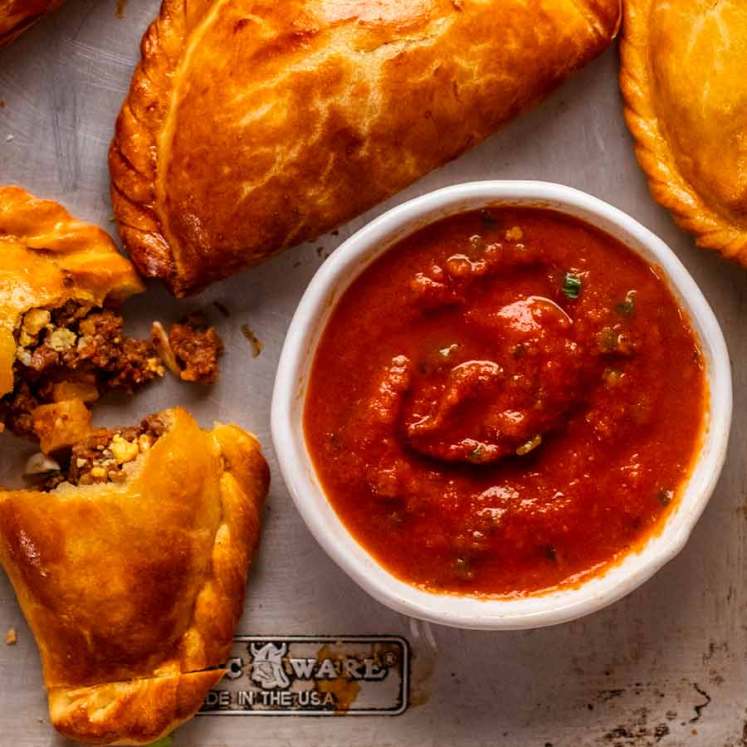
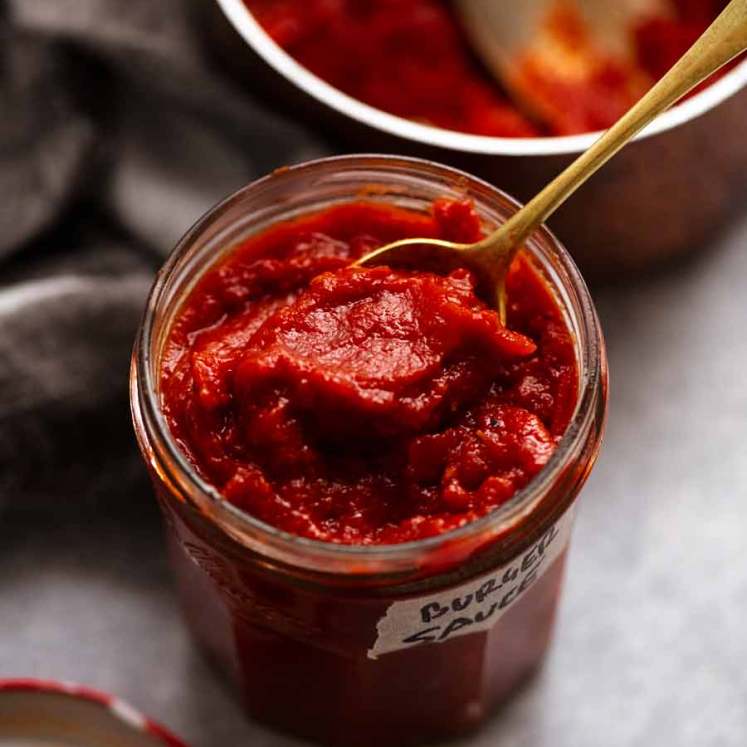
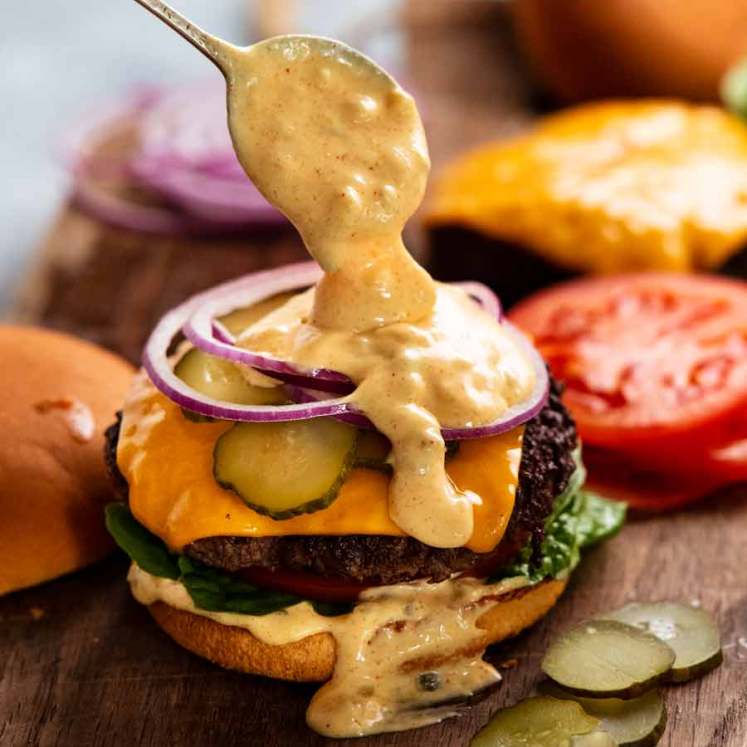
I made this with 500g unsalted butter in a medium pot and it happened in 10 minutes. It was still a little foamy at the end but I could see the mild solids were darkening so I stopped. My ghee is a little darker than Nagi’s but it definitely did the job with my naan and butter chicken.
Never in my life has ghee taken only ten minutes. It’s 20 minutes now for 3 pounds and it’s still foaming.
Huh? This recipe calls for 250g. 3 pounds is over 5 times that weight! Why would you expect them to take the same amount of time?
Nagi you are getting 5 stars just for providing this recipe 😊
Ghee is so expensive to buy so I’m super keen to whip this up. All your recipes are great so I can’t wait to have a crack at it
Mine was on the stove for longer than 10 min. The solids never did boil off and the finished product is very dark. How do I remedy this?
Mine took nearly twice as long as the recipe said and the foam didn’t drop until I gave it a proper stir after 10mins. But I got there in the end.
I’ve since made this again using my medium size saucepan rather than my small one and the timing was spot on.
Gebruik je voor Ghee maken roomboter of margarine?, vloeibare of vaste boter?
En is het vetgehalte niet erg hoog als het water en melksubstantie verwijderd is?
I used 2 layers of cheesecloth (ordered online, Olicity brand) and a 6″ fine-mesh strainer, and it worked perfectly.
i started with (2) frozen sticks of butter and gave it 11 minutes , an extra minute for being frozen. still needed more time to boil off the water. the milk solids got very brown and the ghee tasted nutty,, how do I get rid of the water before the milk solids start to burn?? my freya says hi to dozer and would like to meet him,, lol
Amount of butter to size of pan makes a big difference to the time needed
Can I just ‘clarify’ … :-p
Can I use salted butter to make ghee?
Thank you!
You can (it says in the blog!) but why would you?
There is a much easier way of making gee, and only takes a couple of minutes.
Put your butter into a glass jug, cover with a lid or plate incase it spits, and microwave it on high for 3-4 minutes.
The fats will separate to the top and the milk solds and water will fall to the bottom of the jug.
Let it sit for a couple of minutes, then gently pour the clarified butter from the top, stopping before the unwanted milk solids. No need to strain.
It takes a lot longer than 10 minutes to process butter into ghee. A lot longer.
Absolutely agree.
Not for this recipe.
What can you use the left over milk solids for?
Or is it chicken food?
You can melt them over vegetables or add to mashed potatoes or rice Gary! N x
I made this and put the milk solids into my mashed cauliflower and it was delicious. So glad I didn’t end up throwing it out! Also, i’ve kept my ghee for over 3 months and it’s still good to use :).
Thank you, have a wonderful day
Hi Nagi,
Just a comment about your concern of a possible need to adjust the amount of salts in recipes using ghee, should one choose to use salted butter to make ghee:
If the ghee is made and filtered properly, it will have no solids. Salt does not dissolve in ghee which is pure fat, hence no need for any concern.
Thanks for that information Alam! N x
Update: Wife found the perfect solution for straining off the milk fat, and that is: Use the metallic coffee machine filter. Worked perfectly.
I hadn’t thought of that one Richard – great idea!! N x
Total disaster !!! IMO: It requires skill and the right kitchen tools to drain off the fat and I have neither. Tried paper towel, was not draining and butter all over the stove top, same as for coffee filer.
Butter cloth or real cheese cloth (not the stuff from the grocery store) works great. But you’re right, a simple strainer will not work. Some of the solids go right through.
Pour butter from pan into a jug and then into a sieve for no mess!
You can use a mesh strainer with paper towel/coffee filter and strain it that way, I used salted butter and all the brown bits on bottom my god way salty
Why would you give the recipe 1 star because you don’t know how to drain
That is a ‘you’ problem. Paper towels has worked for me in a pinch.
Lol need some ice for that burn richard
Just wondering how much of clarified butter would the 250g butter yield?
I think it would be approx 205g. The recipe says it makes 220ml, and pure fat is a little under 1g/ml, so 205g is my best bet.
Love your instructions! So nicely illustrated. Made two batches, one plain and one with spices and they both came out GREAT. Next movie night our popcorn will be so good with ghee. Thank you!
Important lesson learned: make sure your mesh is NOT plastic! I poured the beautiful butter into the lined mesh colander and it totally melted the mesh in the colander! UGH! I didn’t even think about it not being metal! A half pound of butter wasted 🙁 Well, I learned. Great recipe, my blooper.
This is almost as heartbreaking as carefully straining the veggies and bones out of a 12-hour slow simmered chicken stock through a colander over the kitchen sink!
its beautiful.Can I eat ghee without any other food?
Ghee is amazingly delicious with a bit of brown sugar and fresh grated ginger in it! In India, this concoction is used in Ayurveda cooking to reduce heat in the body.
Hi Kenneth, I have heard from my elders as well as on the internet it is good to eat ghee daily. Some eat a small bit of ghee and jaggery. I use ghee in my cooking so no need to eat on its own.. a personal favourite is when mum is making chapatis and eating one with ghee. During our new year we mix ghee with bananas too. Enjoy. PS We cook our fried eggs and omelettes in ghee too… to me there is no other way!
made this for naan but had leftover. Decided to make your caramel popcorn and used the ghee to pop the corn. OMG had to quit eating or I wouldn’t have had enough for the caramel. I pop 1/3 cup but add cashews to the popcorn before I coat it. Very habit forming so I don’t make it often!!